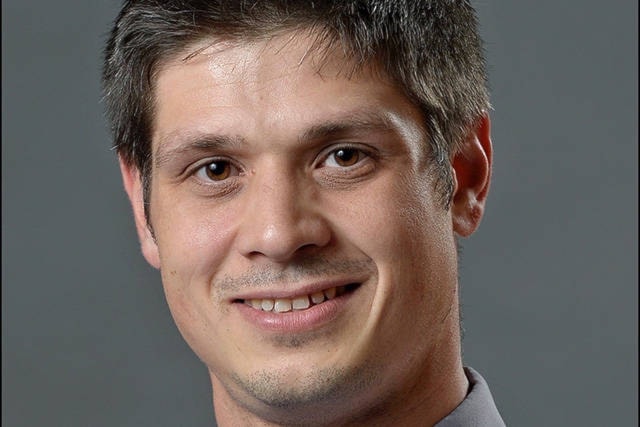It has been over a year since Yukoners went to the polls and ended 14 years of Yukon Party dominance.
Darrell Pasloski resigned his leadership on election night but, at the time of writing, the race to replace him has yet to begin. To the best of my knowledge no one has put their name forward for the job and no timetable has been set by the party executive for a leadership race.
In a larger jurisdiction, such a lengthy delay might seem odd. But with at least three years left in the Liberal mandate there is probably no rush to fire up the engines of a leadership race either. In fact, the Yukon Party may be wise to take a wait-and-see approach, watch how the territorial Liberals govern, and then determine the best approach to unseat them.
We haven’t even received a hint yet of what will ultimately be this government’s undoing. Even if the Yukon Party had a permanent leader he or she would have little ammunition to go after the government with. So far, the best stick the opposition has found to beat the new government with has been an alleged failure to adequately consult on amendments to the Airports Act — in other words nothing that is going to get anyone besides the most partisan of partisans riled up.
There are also practical reasons to wait. If anyone outside the party caucus is interested in the job, putting his or her name forward would likely mean years of waiting to get into the legislature, possibly at the expense of gainful employment. Unlike larger jurisdictions, finding a safe riding to parachute in via a byelection wouldn’t be easy.
But, strategic and practical considerations aside, I am impatient by nature and am curious to know what the Yukon Party of the future is going to look like.
Back in the early 1990s the Yukon Progressive Conservative Party became the Yukon Party in a bid to distance itself with the unpopular PC government (which would go on to be mortally wounded in the 1993 federal election).
And while it has continued as the party that occupies the right wing of Yukon’s political spectrum and draws its electoral support from small “c” conservative Yukoners, it’s actual conservative bona fides are debatable. The Yukon Party of the past decade and a half has been an unapologetic big government party.
The 2015-2016 public accounts (the last fiscal year when the Yukon Party was solely in the driver’s seat) show the Yukon government spent $1.26 billion. That is about double what the government spent in 2004. And despite periodically lowering tax rates it also about doubled the amount of taxes it collected. The civil service has exploded, as has its pay and compensation — to the point where private sector employers now complain of feeling squeezed out. And as much as it likes to paint itself as the party most friendly towards resource extraction, our transformation into a hyper-bureaucratic jurisdiction replete with red tape took place under its watch.
Conservative voters might feel a little ripped off with the bureaucratic beast that a decade and a half of ostensibly “conservative” government created.
So what does the Yukon Party of the future look like? What does the party stand for in an era when the spend-fest appears to be over?
Given that addressing the territory’s fiscal challenges will dominate the Liberal Party’s first mandate we can expect the battle lines to be drawn there.
You can expect that if the Liberals choose deficits and debt the Yukon Party — its role in creating the current budget crunch notwithstanding — will find an opportunity to define itself in opposition to that choice. While I have opined before that deficit spending is the easy route politically there is still a constituency for living within our means.
But before the Yukon Party re-brands as the party of sound fiscal management, some period of time needs to pass so the Liberals can be made to own whatever path we are on. We are not there yet. If the Yukon Party became the voice of fiscal responsibility tomorrow it would have to continue with the disingenuous line it has been trying to sell that all was fine when it left office. That is not a good look for a new leader, nor an effective way to regain the trust of voters.
The best-case scenario for the Yukon Party politically would be if the Liberals choose to increase taxes to deal with our fiscal challenges. This would provide the Yukon Party with a large opening to carry the mantle of anti-tax populism which is as potent a political sentiment as any out there. It wouldn’t take much. A service fee increase here and a tax rate hike there would be enough for some Yukoners — despite the fact that they face one of the lowest tax burdens in the country — to start throwing crates of tea into the river.
A worst-case scenario for the Yukon Party would be if the Liberals address our fiscal challenges through spending restraint or cuts. Those centre-right voters the two parties compete for might be satisfied with the status quo, forcing the Yukon Party to find a new schtick. Maybe the Liberals will start committing some blunders and the Yukon Party will be able to make the next election about management and competence?
There are any number of ways this can go. The Liberals will eventually have to make hard choices to address the budget crunch. And in those hard choices lies the Yukon Party’s path (however difficult) back to office.
Kyle Carruthers is a born-and-raised Yukoner who lives and practises law in Whitehorse.
